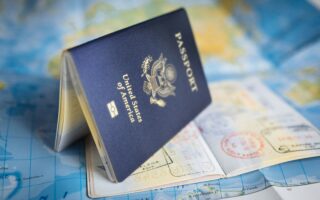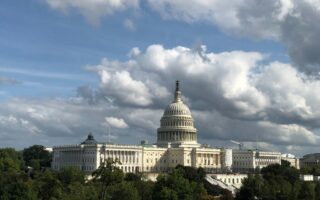Congress Passes the Families First Coronavirus Response Act
By • Mar 19, 2020
Over the weekend, the United States House of Representatives passed the comprehensive Families First Coronavirus Response Act (the Act). This Act provides myriad benefits to Americans struggling with the effects of the COVID-19 pandemic. After agonizing debate and significant amendments watering down the impact to employers, the Senate passed the Act late in the afternoon on Wednesday, March 18, 2020. The President signed the Act into law a few hours later.
There is a lot in the 110 pages of the Act, but there are two primary vehicles employers need to immediately learn. These sections of the Act are the Emergency Family and Medical Leave Expansion Act and the Emergency Paid Sick Leave Act.
Here is a brief overview of both:
Emergency Family and Medical Leave Expansion Act
(EFMLEA)
The EFMLEA amends the FMLA, expanding its coverage to include small employers and newer employees, and provides paid leave to employees who cannot work due the closure of a child’s school or daycare caused by a public health emergency.
What are the big changes to the FMLA?
-
- It adds to the list of eligible leaves of absence to now include any time where the employee cannot work (including working remotely) in order to care for their child because their school or daycare has been closed or is otherwise unavailable due to a “public health emergency.”
-
- If the employee is unable to work because of the public health emergency, after the first 10 business days their time off work is paid (!).
Which employers need to offer this new COVID-19 leave?
The FMLA has covered all employers with 50 or more employees since its enactment. For COVID-19 leave, all businesses with under 500 employees (however small) must offer the leave.
The DOL has the authority to exempt employers with fewer than 50 employees from providing these new benefits, but, given the pace of regulatory action, it’s unlikely the DOL creates these exceptions before the Act goes into effect or even before it expires.
What about employees? Who is eligible for this COVID-19 leave?
Any employee who has been with the company at least 30 days.
What’s a “public health emergency”?
The term “public health emergency” specifically means an emergency with respect to COVID-19 declared by a Federal, State, or local authority.
Is FMLA still unpaid for non-COVID-19 covered events?
Yes. You may breathe a sigh of relief.
How does this new “paid” FMLA leave work for COVID-19 covered absences?
The first 10 business days of leave are unpaid. Employees can opt to use paid time off during these days.
After this period, employees will be entitled to 2/3 of their regular wages, up to $200/day, for the number of hours they would otherwise have been scheduled to work through the duration of their leave, up to the 12 workweeks allowed under the FMLA.
In short, employees can get up to 10 weeks of paid time off if their absence is covered by this new COVID-19 provision.
How do I calculate it for an employee with an irregular work schedule?
If an employee has an irregular schedule, you can calculate their daily rate by averaging the number of hours the employee typically worked per day over the prior 6 months. If the employee didn’t work for the employer the full 6-month period, then you can calculate their daily hours by determining the average hours the employee was reasonably expected to work at the time of hire.
Do employees have to notify you prior to going on FMLA leave under this policy?
Yes, you can require your employees to follow your normal notice procedures in requesting leave, and ask that they provide as much notice as reasonably practicable.
Do you need to return the employee to their job after their COVID-19 covered absence?
Yes, probably. Small businesses, however, those with fewer than 25 employees, do not need to return the employee to their position if the position no longer exists because of economic conditions impacting the employee’s employment caused by the COVID-19 pandemic, so long as the employer makes reasonable efforts to return them, but ultimately cannot. Even so, the employer must contact the employee if an equivalent job becomes available within a year of the earlier of: (1) the COVID-19 pandemic officially ending; or (2) the expiration of the employee’s FMLA leave.
What is the timeframe for these changes?
These amendments to the FMLA become effective 15 days from the day it is signed, April 2nd, and remain in effect until December 31, 2020.
Emergency Paid Sick Leave Act
(EPSLA)
Less complex, but working in tandem with the amendments to the FMLA, the EPSLA requires employers to provide paid time off to employees who are unable to work due to covered circumstances relating to the COVID-19 pandemic.
What does the EPSLA do?
It requires covered employers to provide paid sick leave to employees.
Who’s a covered employer?
Similar to the amended FMLA, the EPSLA applies to employers with fewer than 500 employees.
Are all of your employees eligible for paid leave under this law?
Yes.
When are employees entitled to paid sick leave under the act?
An employer must provide paid sick leave to employees who cannot work if any one of these is true:
-
- The employee is subject to a government quarantine or isolation order related to COVID-19;
-
- The employee has been advised by a health care provider to self-quarantine due to concerns related to COVID-19;
-
- The employee is experiencing symptoms of COVID-19 and is seeking a medical diagnosis;
-
- The employee is caring for an individual who is subject to a government quarantine or isolation order or has been advised by a health care provider to self-quarantine due to concerns related to COVID-19;
-
- The employee is caring for a son or daughter whose school or daycare has been closed, or the childcare provider is otherwise unavailable due to COVID-19 precautions; or
-
- The employee is experiencing any other substantially similar condition specified by the Secretary of Health and Human Services in consultation with the Secretary of the Treasury and the Secretary of Labor.
How much paid sick leave are employees entitled to receive?
Full-time employees are entitled to 80 hours of paid sick time. Part-time employees are entitled to the number of hours they work on average over a 2-week period. If employees work irregular schedules, calculate the number of hours the same way described above for FMLA leave.
Will employees be able to carryover sick leave from year-to-year?
No.
Are there limitations on the amount you must pay employees?
Yes. The law places limitations on the compensation for the paid sick leave based on the reason the employee is taking the leave.
Specifically, when the employee’s need for the leave is based on (1), (2) or (3) – see above under When are employees entitled to paid sick leave under the act? – they are entitled to up to $511/day. If the reasons for the leave are based on (4), (5) or (6) the employee only receives 2/3 of their pay, up to $200/day.
Can you require employees to find replacements if they take sick leave?
No.
Can you require employees to use other paid time off (PTO) before using paid sick leave?
No.
What happens if we don’t provide paid sick leave?
Employers who fail to comply will have failed to pay minimum wages in violation of the Fair Labor Standard Acts, and can be subject to a penalty.
Will you need to notify employees of their rights under this law?
Yes. Employers need to post notices to employees of their rights under this Act in conspicuous places on the employer’s premises.
Can you require employees to inform you when they need time off under this new entitlement?
Yes. You can require an employee to follow your regular notice procedures for taking leave.
Will you have to pay for this new law?
Yes, but Congress seems to be aware of the financial strain these policies may place on businesses that are already struggling from the effects of COVID-19. Employers will receive a tax credit for each calendar quarter equal to 100 percent of the qualified sick leave wages and paid family leave paid, so long as the paid leave did not exceed the prescribed monetary caps.
See, it’s not all bad news!
What is the time frame for these changes in the law?
Once signed into law, it will go into effect 15 days later and will stay in effect until December 31, 2020. Because the Acts were signed into law on March 18, 2020, they will be going into effect no later than April 2, 2020.
NEXT STEPS
Employers who do not have FMLA policies now need FMLA policies. You should also consider adjusting your PTO policies. You must post notices of this new paid leave entitlement, which will be issued by the DOL the week of March 23, and generally inform employees of their rights to paid time off. You will need to amend your leave of absence forms to account for leaves now related to COVID-19.
THOMPSON COE’S COVID-19 RESPONSE TEAM IS READY TO SUPPORT YOUR BUSINESS
Our COVID-19 Response Team is here to provide you with compliance and strategic decision-making support. Critical information for employers can be found at https://www.thompsoncoe.com/news/employer-updates-and-state-and-federal-responses-to-coronavirus/. Contact any member of the Team with questions or support needs.
Members of the myHRgenius program continue to receive no-fee support during this difficult time for their companies and employees. Members are encouraged to reach out with any questions at 651-389-5007 or to myhrgenius@thompsoncoe.com.
Interested in membership? For information in membership and enrollment go to www.myhrgenius.co or call 651-389-5007.






